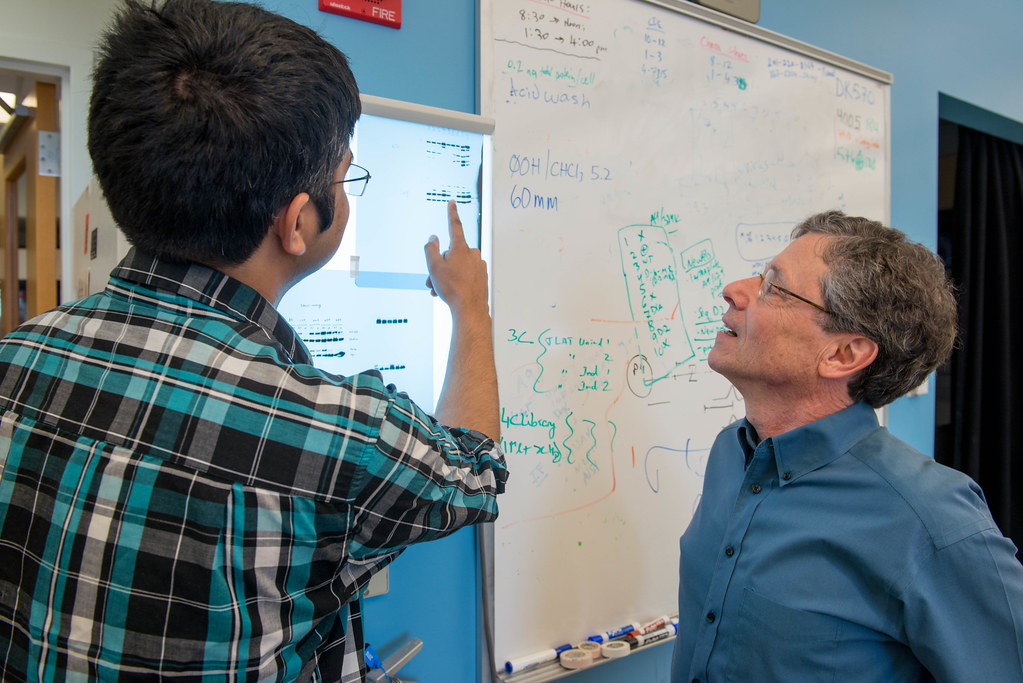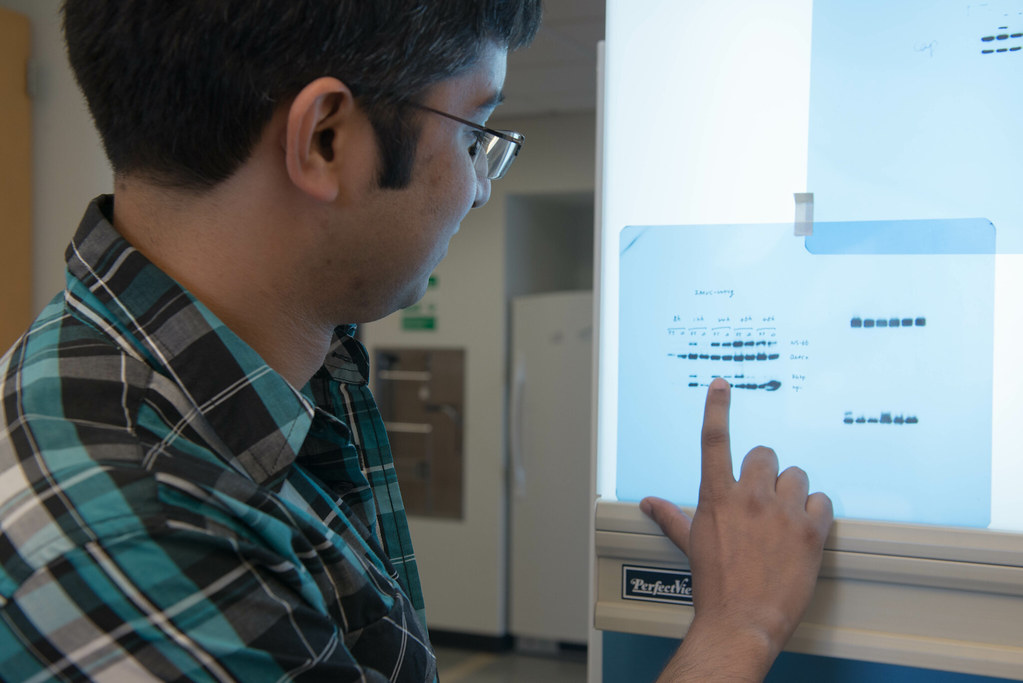Lab explores how parvo wins in tug of war with cells

By Samantha Kummerer | Bond LSC
At the start of any tug of war game, the battle is even. But it doesn’t stay that way for long. After a back and forth, the inevitable happens — the stronger team gives the rope one last tug and send the losers toppling over, claiming their dominance.
This is a game cells and viruses know well. In their version of tug of war, the virus eventually overtakes the cell and not only topples it but causes a consequence far worse than a few scraped knees.
This is how post-doctoral fellow Kinjal Majumder thinks of the interaction between parvoviruses and the dividing cells it conquers.
Majumder and others in the lab of David Pintel at Bond Life Sciences Center recently gained insight into how the virus achieves victory over the cell. These findings could improve human therapies and even play a role in treating cancer.
Meet the Champion
Parvoviruses are some of the smallest, simplest viruses. With only two genes, it has fewer DNA base pairs than most other viruses, up to ten times smaller in some cases. The virus’ size and simplicity, however, do not make it any easier to understand.
Pintel’s lab works at the “nitty gritty” level of the virus to study its basic molecular mechanism.
The group understands a little about how the virus operates but is working on the why.
Like a sly culprit, the virus uses its tiny nature to sneak inside the cell. The cell recognizes the presence of the virus as a foreign piece of DNA and responds to try to remove it. Once the cell responds, the virus begins replicating inside until it overtakes the cell. But, the tug of war game ends up more one-sided, so perhaps viewing the virus as a ruthless conqueror would be more accurate.
Latest Developments
Majumder’s experiments specifically focus on DNA damage response, an intrinsic function of cells. The DNA damage response constantly works to protect us from cancer by continuously repairing broken DNA to prevent harmful mutations in cells . This response uses a network of cellular pathways to monitor and provide checkpoints in the cell cycle to prevent damage from being passed on to the next generation of cells. But parvoviruses also tricks cells to begin a DNA damage response, which they use to eventually take over the host cell.
In July, the lab published the latest finding from a series of papers exploring a type of these parvoviruses called minute virus of mice (MVM). The discovery began when the team found that the virus stops cells from dividing within infected cells.
To do this, MVM uses the DNA damage response to stop cells from dividing, but still allows virus replication to continue. The group developed a system to examine how the virus took over the cell. Further experiments revealed the virus transcriptionally regulates cell cycle genes.
The team used CRISPR to target a cellular gene that the virus must inactivate for it to replicate. Expression of this gene is required for the cell to divide. They discovered the virus actually blocks the transcription of this gene so it cannot make its protein. Blocking this function also prevents the cell from dividing. Without cell division, the virus is free to rapidly replicate inside the cell.

Majumder said parvo’s manipulation of infected cell cycles is different from other viruses because it can only replicate in cells that are actively synthesizing DNA. It eventually halts the process of cell division in infected cells by dysregulating transcription factors that regulate cell cycle gene expression. That’s what makes this discovery unique.
Endless Possibilities
This discovery only scratches the surface.
Majumder said the lab constantly thinks of new experiments to explore parvovirus biology. The simplicity of its DNA expedites the process of culturing and growing the virus, leaving more time for what Majumder calls the “fun experiments.”
“We try to be thorough and confident of our findings, so we attack experiments from many different angles,” Majumder said.
Imagine viewing an object from multiple angles under varying light conditions. The change in perspective reveals something different about it with each new look. This approach expands their understanding of parvoviruses.
Majumder explained the lab makes use of everything from high-resolution imaging and CRISPR technology to proteomics and deep sequencing to study the tug-of-war between MVM and the DNA damage response.
“The thing about being a postdoc is you kind of have to be a jack of all trades,” Majumder said about his ability to conduct the range of experiments.
Wider Implications
While parvoviruses are not a deadly threat to humans, understanding it has major implications for humans.
Parvoviruses are used to develop gene therapy tools to treat disorders like muscular dystrophy and spinal muscular atrophy. The Pintel lab collaborates with labs such as the Lorson and Sarafianos lab in Bond LSC, to explore its therapeutic potential.
Majumder explained the lab is also interested in understanding how the virus could improve cancer treatment. Parvo’s tendency to replicate in dividing cells links it to how cells divide uncontrollably in cancer. Majumder explained those scientists are trying to use that function of the virus to target cancer cells.
This makes work in the Pintel lab that much more important. But, before the virus can fully improve humans’ conditions, researchers better grasp its capabilities. And that means more of the daily experiments within the Pintel lab.
“What we learn from studying a simple virus can be expanded to more complicated viruses because there are some viruses that can make a dozen different proteins, so that’s a more complicated system,” Majumder said. “Before you can get to the more complicated systems, you need to be able to understand the one that makes just a few proteins.”
For now, scientists will play their own tug of war as they go back and forth in their findings and experiments to uncover the mystery surrounding this small, unique virus.

